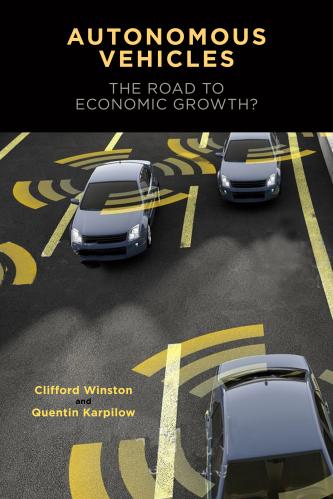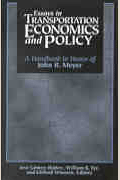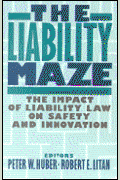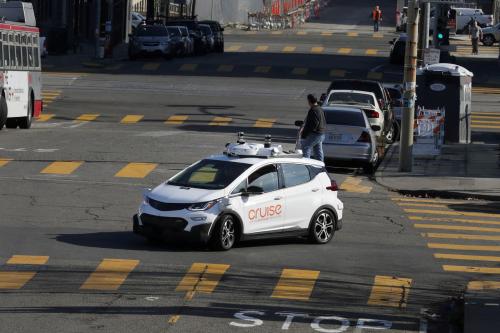“Driverless cars are a transformative technology that could have important implications for society, national security, the economy, and the environment,” Darrell West and Hillary Schaub wrote in a 2015 piece that outlined a number of challenges, benefits, and policy recommendations related to autonomous vehicles. West, vice president and director of Governance Studies, and Schaub, a program coordinator, addressed specific issues for the continued development of this technology, including: cybersecurity and liability, increasing fuel efficiency and reducing traffic fatalities, and addressing international safety and testability. “The discussion surrounding driverless cars involves a great deal of uncertainty,” West and Schaub observed. “There are huge ethical decisions that must be made regarding these new technologies. It is the responsibility of policymakers to help decide these issues.”
Here are analyses and data about driverless cars drawn from recent Brookings research.
Computers can be considered legal drivers of vehicles

Noting that in early 2016, the National Highway Transportation Safety Administration determined that under federal law computers could be considered legal drivers of vehicles, Darrell West and Jack Karsten of the Center for Technology Innovation write that, “With the combined efforts of the technology industry, automakers, and federal regulators, driverless cars could achieve widespread use sooner than many drivers and policymakers might expect.”
With technology companies and automakers continuing to make advances on driverless cars, and with increased federal research, companies like Toyota are saying they aim to deliver driverless vehicles around 2020. Given this pace of development, West and Karsten argue that “creating a national strategy for driverless cars is a crucial task for federal transportation officials.”
Pittsburgh is a leader in driverless car technology research and testing
Bruce Katz, the Brookings centennial scholar, writes of Pittsburgh, Pennsylvania Mayor Bill Peduto being the first person to hail and ride a driverless taxi. The former steel manufacturing center has become, Katz notes, “the research lab and test bed for this revolutionary technology” due to an “ecosystem” that includes the robotics research unit at Carnegie Mellon University, plus start-ups and large firms, and Uber’s Advanced Technology Center. “But what has made Pittsburgh especially effective,” Katz says, “is public, private and civic leadership that is willing and eager to make the city itself a laboratory for technological invention and testing.”
The U.S. military has an interest in self-driving vehicles
Automated vehicles are not just for civilian passengers. As Nonresident Senior Fellow Kenneth Anderson explains in a Lawfare blog post, “the U.S. military has a keen interest in self-driving vehicles that can be deployed in combat for many possible functions, such as logistics and re-supply.” Anderson discusses some of the unique technological, reliability testing, and regulatory issues the Department of Defense faces as it develops this technology for warfare.
Autonomous vehicles are expected to comprise 25 percent of the global market between 2035 and 2040

In a wide-ranging 2016 paper, Darrell West explores the different types of autonomous vehicles, their impact, and cross-national issues involved with their development. He looks in detail at the technology, budgetary, regulatory, legal, and policy frameworks for autonomous vehicles in China, Europe, Japan, Korea, and the United States. “In each nation,” West argues, “government officials and business leaders have to resolve these matters because within a foreseeable period, the technology will have advanced to the point where intelligent vehicles will spread into key niches such as ride-sharing, taxis, delivery truck, industrial applications, and transport for senior citizens and the disabled.”
“People and businesses will have driverless options for taking them safely to their destinations,” he says, “and it is important for leaders to provide reasonable guidance on how to commercialize advanced technologies in transportation.”
Fragmented regulatory framework the biggest challenge to driverless cars in America
In a briefing paper included in the Election 2016 and America’s Future series, and now part of the “Brookings Big Ideas for America” book meant to inform the new Trump administration, West explains that the “biggest American challenge” for autonomous vehicles “is overcoming the fragmentation of 50 state governments and having uniform guidelines across geographic boundaries. Public officials should address questions such as who regulates, how they regulate, legal liability, privacy, and data collection.”
In the briefing paper, West reviews the benefits and needed policy actions—including better national technical standards, addressing legal liability, and improving data protection and security. “Governments can accelerate or slow the movement towards self-driving vehicles by the manner in which they regulate,” West writes. “Addressing relevant issues and making sure regulatory rules are clear should be high priorities in all the countries considering autonomous vehicles.”
Existing products liability law is adaptable to new issues in autonomous vehicles
 John Villasenor, a nonresident senior fellow in Governance Studies, examines the liability issues associated with autonomous vehicles as new technologies continue to advance us into an era of widespread commercial use of vehicle automation. In 2012, Villasenor notes, motor vehicle accidents caused over 33,000 deaths in the United States alone. Just as existing vehicle automation technologies have provided safety improvements, additional automation promises to improve safety even more. In this context, Villasenor argues that “broad new liability statutes aimed at protecting the manufacturers of autonomous vehicle technology are unnecessary.”
John Villasenor, a nonresident senior fellow in Governance Studies, examines the liability issues associated with autonomous vehicles as new technologies continue to advance us into an era of widespread commercial use of vehicle automation. In 2012, Villasenor notes, motor vehicle accidents caused over 33,000 deaths in the United States alone. Just as existing vehicle automation technologies have provided safety improvements, additional automation promises to improve safety even more. In this context, Villasenor argues that “broad new liability statutes aimed at protecting the manufacturers of autonomous vehicle technology are unnecessary.”
In this paper, Villasenor offers a set of guiding principles for legislation. “In short,” he writes, “the liability concerns raised by vehicle automation are legitimate and important. But they can be addressed without delaying consumer access to the many benefits that autonomous vehicles will provide.” He concludes that the U.S. “has a robust products liability law framework that, while certainly not perfect, will be well equipped to address and adapt to the autonomous vehicle liability questions that arise in the coming years.”
The adoption of driverless cars can save thousands of lives each year
Drawing upon research that shows that as unemployment rises, more dangerous drivers drive less and safer ones drive more—thus decreasing traffic deaths—Senior Fellow Cliff Winston and Vikram Maheshri of the University of Houston argue that policymakers “could allow the most dangerous drivers … to continue to have access to an automobile provided it is driverless or at the very least has more autonomy than current vehicles.” Doing so, they say, “will not only save lives but also would “expedite the transition to driverless cars and help educate the public and build trust in the new technology.”
Watch:
Automated vehicles will save government billions of dollars
As Kena Fedorschak of Arizona State University and Brookings Nonresident Senior Fellow Kevin Desouza observe, state and local governments derive billions of dollars in revenue from speeding tickets, DUIs, towing fees, and other driver-related laws. They argue that while the safety improvements offered by autonomous vehicles will remove these sources of revenue, the technology will save taxpapyers an estimated $10 billion per year by eliminating “inefficiencies” in the transportation system such as congestion, road damage, and deaths.
“Even if the public sector refuses to innovate, government entities will save big bucks from the impending driverless car revolution,” Fedorschak and Desouza conclude. “Billions will be saved as a result of increased safety and the reduction of transportation inefficiencies. The future is bright for autonomous vehicles.”







Commentary
Driverless cars are coming: Here are 8 useful facts about them
January 24, 2017